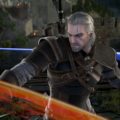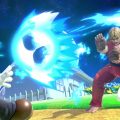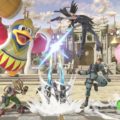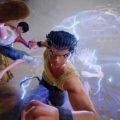Fighting Games Friday: When the Lab Strikes Back

There have been a number of benefits to fighting games skipping arcades in the last half-decade or so, now the case for even the most niche titles in the genre. There’s no need to wait for several months for games to be ported to home consoles, or to try and venture to arcades that may be a good drive from where a person lives these days — particularly for games that laser targeted Japanese arcades. It’s just a shame the arcade experience will be tough to replicate at home and even while visiting friends (when you can as an adult), with having a bunch of in-person competition to play.
There’s a been a notable detriment too: Fighters have been more difficult to balance. Those who visited arcades also subtly worked as beta testers, who unsuspectingly made sure characters who were either too powerful or too weak were nerfed or improved, respectively, for the home release. Now that arcades are gone, that testing is happening at home, the effects of which have been displayed over the last few years.
Note the number of recent games that have debuted very powerful downloadable content characters. It’s clear to see who they are when they quickly become the most popular characters in online sectors, and especially through how many of them dominate tournaments.

When Leroy Smith debuted in Tekken 7, for instance, Evo Japan’s finals were stuffed with players using him to the point that fans were actively cheering those who used other characters. The same would have occurred with Fahkumram had tournaments not been largely stopped thanks to the COVID-19 pandemic, and Tekken 7’s netplay isn’t good enough for online tournaments to be viably held. Both characters have since been nerfed through balance patches, but other games ran into the same issue. You can expect to see plenty of Luke players at Street Fighter V tournaments now that they’re happening in person, a character who’s still a formidable force even after a balance patch. The same happened with Happy Chaos in Guilty Gear Strive tournaments for a short time, who possessed powerful attacks with ridiculous range, but nerfs have since taken a blow to him.
The biggest survivor of this current phenomenon? The Lab Coat version of Android 21 in Dragon Ball FighterZ, a character so obviously broken that it feels like the development team inserted her into the game for that purpose. She truly has it all, including quick-hitting normal attacks difficult to block when they hit low, great special attacks, one of the quickest anti-air attacks in the game, and an incredibly fast solo off-the-ground attack (the only other solo one in the game is Android 16’ considerably slower one). But the most devastating attack in her arsenal is a command grab super which, if it lands, will buff her damage and nerf the opponent’s for the duration of the match. When a character has so many obvious benefits, why wouldn’t most of the remaining online populace make space for her in their teams?

What’s remarkable here is how Android 21 (Lab Coat) released in late February, and several players over time have documented how broken she is. Yet, Bandai Namco and Arc System Works have done nothing about her four months after she released. It’s a testament to how low of a priority this game is now for both companies involved, as if that wasn’t already clear with this newest and perhaps final character having a character model ready to use. (She might have also been chosen as the latest face for another reason that I will not elaborate on.) The companies have barely acknowledged her, but they’re hardly silent when it comes to other games.
The combination of her sheer brokenness and how she can solely extend the lengths of matches, in a game where they already run too long thanks to most attack damage being too low for a 3-on-3 game, is why CEO 2022 banned the character from being played. Tournament organizers banning her is a testament to how overpowered she is, something not done for any aforementioned examples. They don’t ban characters for being too top tier. Other players, in the meantime, have relegated Android 21 (Lab Coat) to the “broken” section of their tier lists.
It’s a mystery as to what Evo 2022 will do, but tournament organizers typically make decisions regarding what is and isn’t allowed weeks in advance. Bandai Namco’s promise to provide a balance patch at some vague point “around July 2022” could not hammer home how this game is no longer a priority for them any harder. It’s still a bit too early for Evo to make a final decision here, but only “a bit.”
Arcades are not coming back any time soon outside of hangouts for big-time hobbyists, meaning imbalanced characters in initial fighting game releases will continue to be a problem for the near and perhaps distant future. The best anodyne for this is for developers to hold more alpha and beta tests for their games, and to extend their lengths. Characters like Android 21 (Lab Coat), and the developer and publisher’s lack of urgency to address them, should be the exception. We’ll see if that pans out.





